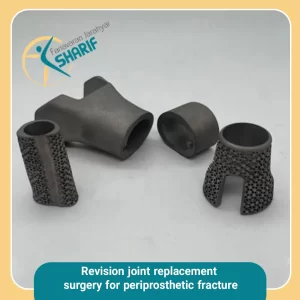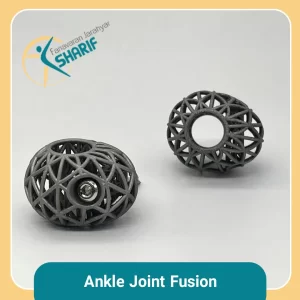Evans Osteotomy Wedge
Our Evans wedge system is utilized for fractures or foot and ankle osteotomies, guaranteeing exceptional internal bone fixation. Its porous structure promotes osseointegration by maximizing surface area to volume ratio provides higher interconnectedness, according to scientific research. [1] While these implants use advanced 3D printing technology and biocompatible medical-grade materials, patients are increasingly pleased with the great surgical outcomes. The internal bone fixation for foot osteotomies, such as opening wedge osteotomies, and lateral column lengthening is the intended application of these wedges.
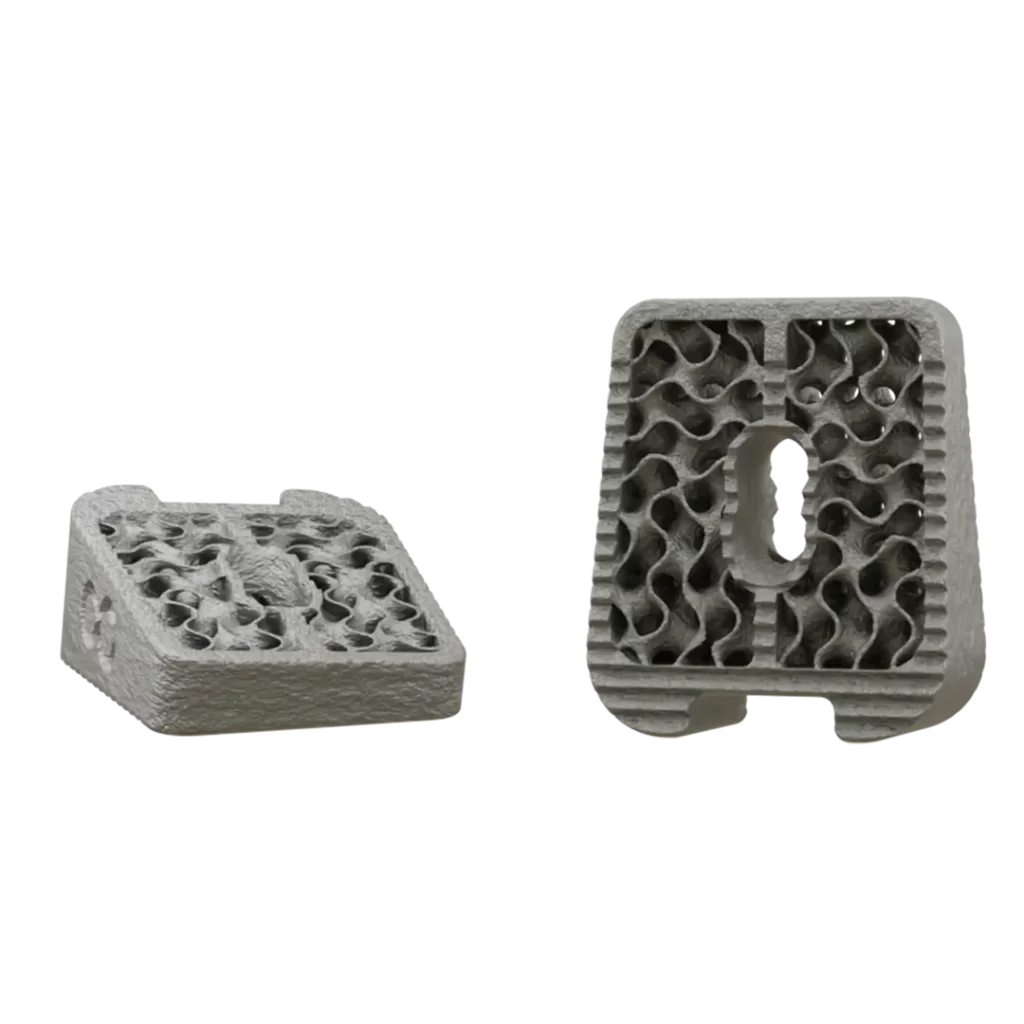
Product Overview
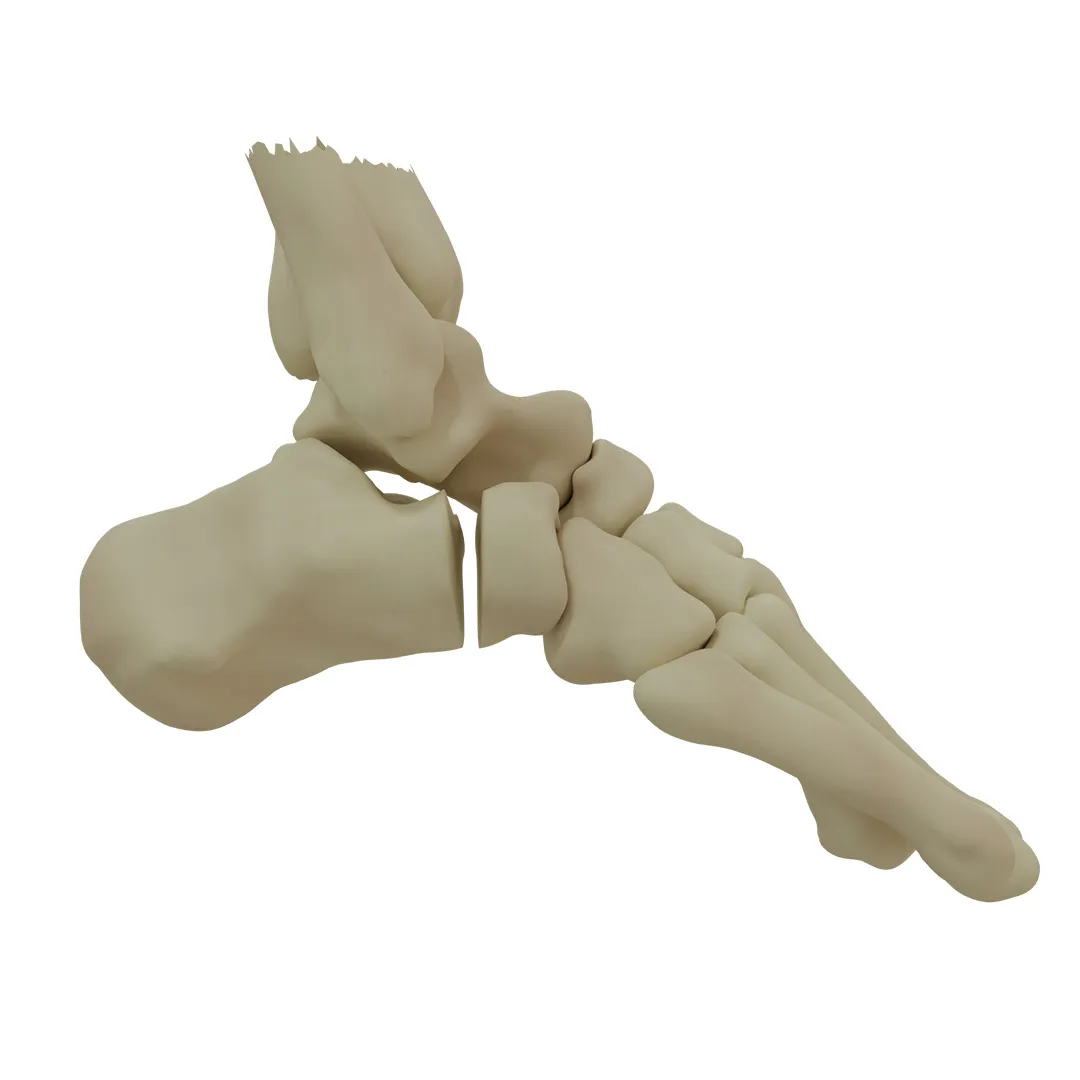

Product Overview
When Evans wedges with TPMS porosity design are manufactured using biocompatible medical-grade materials and leading-edge 3D printing technology, the chances of a good surgical outcome are significantly enhanced.
It has been proven that preoperative digital planning for Evans calcaneal osteotomy is an effective method for forecasting the surgical graft size for precise pedal realignment. [2]
Workflow
Imaging
To match the reduction surface with the wedge, a realistic 3D model of the patient's foot and ankle anatomy is generated using X-ray imaging.
Wedge Design
Considering the patient's anatomy and soft tissue features, biomedical engineers create a patient-specific wedge.
Product Manufacturing
3D printing technology is used to construct the wedge with titanium, cobalt-chrome, and tantalum when a doctor permits to proceed.
Surgery
The sterilized wedge are given to the physician. An employee of our company may serve in the operating room to help with wedge placement.
Specifications
Based on the clinical evaluation of the patient and the desired course of therapy, surgeons and the engineering team can work together to develop the shape and features of the wedge.
To encourage bone ingrowth and osteointegration as secondary stability of the fixation, the base structure of these wedges may incorporate a TPMS lattice structure, such as gyroid because complex surface topography provides expulsion resistance and it will make a union.
These wedges allow for the customization of any design according to the doctor’s preferences, so they are developed in various footprint sizes and thicknesses to accommodate different patient anatomies.
Based on the intended inserter we threaded the hole to facilitate the wedge placement.
Manufactured using laser powder bed fusion of medical grade titanium alloy with intended coarse teeth to prevent migration of the wedge.
Specifications
Based on the clinical evaluation of the patient and the desired course of therapy, surgeons and the engineering team can work together to develop the shape and features of the wedge.
benefits
Lorem ipsum dolor sit amet, it amet, consectetur adipiscing elit. Ut elit tellus, luctus nec ullamcorper mattis, pulvinar dapibus leo.Lorem , luctus nec ullamcorper mattis, pulvinar dapibus leo.
Lorem ipsum dolor sit amet, consectetur adipiscing elit. Ut elit tellus, luctus nec ullamcorper mattis, pulvinar dapibus leo.
- Lorem kjsae ismcp ipsum
- Lorem ipsur sit amet
- fast and hard
- easy and flex
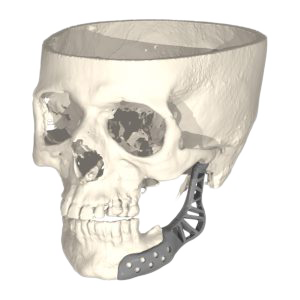
Cases report
An 87-year-old male patient with severe genu varum (Varus-bow-legged) and significant bone defects...
The patient is an 86-year-old woman who presented to the doctor with a...
A 45-year-old male patient who had suffered a fracture and comminution of the...
A 56-year-old male patient with Charcot joint due to diabetes had a portion...
Cases report
Our case studies illustrate the benefits that come from implementing our wedges. They demonstrate the effectiveness of our treatment plans and the ability of our staff to create unique solutions for each patient. Examining our reports may help you understand the level of precision and attention to detail we put into each and every aspect of our work with patient-specific wedges.


